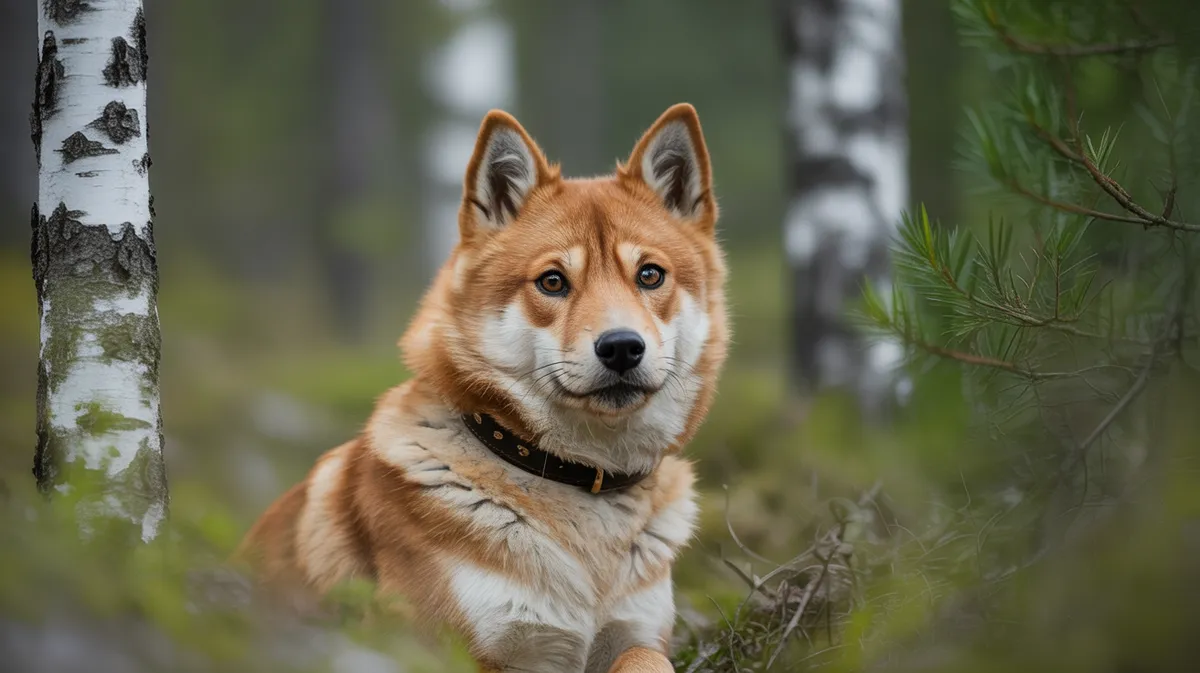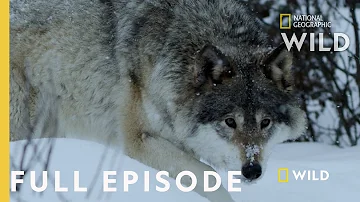
Finnish Spitz
Canis lupus familiaris

Meet the Finnish Spitz
The Finnish Spitz is a medium-sized, fox-like dog breed known for its vibrant golden-red coat and lively, alert expression. Originally bred in Finland for hunting game birds and small mammals, this breed is famed for its distinctive yodel-like bark and keen intelligence. Finnish Spitz are highly energetic, loyal, and good with families, thriving on companionship and mental stimulation. Their friendly, confident demeanor makes them excellent watchdogs, while their independent nature requires patient, consistent training.
Classification
Mammal
Habitat
Boreal forests and rural areas
Diet
Omnivore
Lifespan
12-15 years
Conservation
Least Concern
Weight
11-16 kg (24-35 lbs)
📖Fascinating Facts
Distinctive Appearance
Finnish Spitz have a fox-like face, erect ears, and a dense, golden-red coat, making them easily recognizable among spitz breeds.
Vocal Talents
They are renowned for their unique yodel-bark, which is used to signal hunters during bird hunting and is celebrated in Finnish culture.
National Dog of Finland
The Finnish Spitz has been the national dog of Finland since 1979 and is considered a cultural treasure in its homeland.
📋Detailed Description
The Finnish Spitz is a medium-sized, spitz-type dog, typically weighing between 12 and 13 kg (26–29 lbs) and standing 44–50 cm (17–20 in) at the withers for males, with females slightly smaller. Its most distinctive features are a dense, double-layered coat of vibrant red-gold to deep golden hues, a sharply pointed muzzle, erect triangular ears, and a bushy, tightly curled tail. The breed exhibits a fox-like appearance, with expressive almond-shaped eyes and a lively, alert demeanor. Anatomically, the Finnish Spitz is built for agility and endurance, with a light but muscular frame and well-arched toes adapted for traversing rugged, forested terrain. Behaviorally, it is highly vocal, utilizing a unique, rapid 'yodel-bark' to indicate the presence of game, a trait selected for in its development as a 'bark pointer.' Socially, Finnish Spitz are intelligent, independent, and form strong bonds with their human families, often displaying a gentle and playful nature with children. The breed is known for its keen senses, particularly acute hearing and olfaction, which are crucial for its traditional hunting roles. Reproduction is typical of medium-sized canids, with litters averaging 4–6 puppies. The breed's unique adaptations, including its vocalization and stamina, are a result of centuries of selective breeding in the harsh boreal forests of Finland, where it remains a prized hunting companion and national symbol.
💡 Did you know?
The Finnish Spitz uses a characteristic 'yodel bark,' which can reach up to 160 barks per minute to alert hunters to game.
🔬Research & Sources
Wikipedia Summary
The Finnish Spitz is a breed of dog originating in Finland. The breed was originally trained to hunt all types of game from squirrels and other rodents to bears. It is a "bark pointer", indicating the position of game by barking, and drawing the game animal's attention to itself, allowing an easier approach for the hunter. Its original game hunting purpose was to point to game that fled into trees, such as grouse, and capercaillies, but it also serves well for hunting elk. Some individuals have even been known to go after a bear. In its native country, the breed is still mostly used as a hunting dog. The breed is typically friendly and good with children, so it is suitable for domestic life. The Finnish Spitz has been the national dog of Finland since 1979.
Last Modified: 4/2/2025
🎭Behavior & Social Structure
Finnish Spitz are highly active and alert, requiring significant mental and physical stimulation. Historically, they were used for hunting a variety of game, especially forest birds such as grouse and capercaillie, as well as small mammals and, on occasion, larger animals like elk and even bears. Their primary hunting behavior involves locating prey, then barking persistently to both signal the hunter and distract the animal, often causing birds to remain stationary in trees. This 'bark pointing' can involve hundreds of barks per hour, with some individuals recorded at over 160 barks per minute. Socially, Finnish Spitz are loyal to their families but can be reserved with strangers, a trait that makes them effective watchdogs. They are generally tolerant and playful with children but may be dominant or territorial with other dogs, especially of the same sex. Daily routines should include ample exercise, interactive play, and opportunities for scent work or tracking to satisfy their hunting instincts.
👶Reproduction & Life Cycle
Finnish Spitz reach sexual maturity at approximately 10–12 months, though responsible breeding is typically delayed until at least 18 months to ensure physical and behavioral maturity. The breed is monoestrous, with females coming into heat once or occasionally twice per year. Mating is usually natural, with gestation lasting about 63 days. Litter sizes average 4–6 puppies, though litters of up to 8 have been reported. Puppies are born blind and deaf, with eyes opening around 10–14 days. Parental care is primarily provided by the dam, who nurses and grooms the pups, though in domestic settings, human intervention is often necessary for socialization and early training. Weaning begins at 3–4 weeks, and puppies are typically ready for adoption at 8–10 weeks. The breed does not have a defined breeding season in domestic settings, but in Finland, most litters are planned for spring or early summer to coincide with favorable weather.
🛡️Adaptations & Survival
The Finnish Spitz exhibits several adaptations to its native boreal environment. Its dense double coat provides insulation against cold, wet conditions, while the outer guard hairs repel moisture and debris. The breed's compact, arched feet are well-suited for moving across snow and uneven forest floors. Its acute hearing and sense of smell are essential for detecting elusive prey in dense woodland. The signature 'bark pointing' is a behavioral adaptation, evolved to facilitate communication between dog and hunter over long distances and through thick vegetation. The breed's stamina and agility allow it to cover large territories and pursue game for extended periods. Its independent temperament is an evolutionary response to the need for problem-solving and persistence during solitary hunting tasks.
📚Research Sources
🎨Cultural Significance
The Finnish Spitz holds a prominent place in Finnish culture, officially designated as the national dog of Finland in 1979. It is celebrated in folklore and traditional songs, often symbolizing loyalty, alertness, and the connection between humans and the northern wilderness. The breed is featured in Finnish art, stamps, and literature, and is a frequent participant in national dog shows and hunting competitions. Historically, the Finnish Spitz was essential to rural livelihoods, providing both companionship and a means to procure food. Its distinctive bark is so culturally significant that annual barking contests are held in Finland to showcase the breed's skills. The dog is sometimes referred to as 'Suomenpystykorva' (Finnish Cock-eared Dog), reflecting its characteristic erect ears.
🔬Recent Research & Discoveries
Recent genetic studies have confirmed the Finnish Spitz as a basal breed, with ancient origins distinct from most modern European breeds. Research published in 2017 using whole-genome sequencing has placed the Finnish Spitz within the northern spitz-type clade, closely related to other Scandinavian hunting breeds. Ongoing studies focus on the genetic basis for its unique vocalization patterns and resistance to cold-related diseases. Behavioral research has examined the breed's high vocal reactivity and its implications for urban living. Conservation genetics projects in Finland are monitoring inbreeding coefficients and promoting outcrossing strategies to maintain genetic health. Ethological studies have documented the breed's complex social signaling and problem-solving abilities, contributing to broader understanding of canine cognition.
🎥Wildlife Videos

Finnish Spitz in the Suburban Wilderness
The Adventures of Aamu Tähti (Morning Star in Finnish). 0:00 Intro 1:37 Surte Lake 3:10 Squirrel Time 4:52 …and up we go 5:53 ...
Life with Finnish Spitz

Land of Ice and Snow (Full Episode) | Wild Nordic
As seen by the Viking gods, the fabled wildernesses of Norway, Finland and Sweden are revealed from the skies above. Watch ...
Nat Geo Animals

Finnish Spitz Meets Wild Deers
In the crisp dawn of a March morning, where the air clung to winter's chill, Aamu, a spirited Finnish Spitz, and her companion, ...
Life with Finnish Spitz

Finnish Spitz at Dog Mountain
Back to where we started in Tandådalen last summer, west of Hundfjället (Dog Mountain). Now, this is the first part where I ...
Life with Finnish Spitz

The dream of a Finnish spitz
Visit Savukoski-Korvatunturi

Finnish Spitz digs river
First “true” autumn hunting trek in Lapland. We're at Matskan area, a quite remote area near Dikanäs in Vilhelmina municipality.
Life with Finnish Spitz
🌍Habitat Information
The Finnish Spitz typically inhabits Boreal forests and rural areas environments. Finnish Spitzs have adapted to their environments with specialized features and behaviors.
Primary Habitat:
Boreal forests and rural areas
More detailed habitat information will be available soon.
🛡️Conservation Status
The Finnish Spitz is currently classified as Least Concern. Conservation efforts are crucial for preserving this species for future generations.
Common Threats:
- 🏠Habitat loss and fragmentation
- 🌡️Climate change impacts
- 🎯Hunting and poaching
- 🏭Human-wildlife conflict
⚠️Threats & Conservation Challenges
Globally, the Finnish Spitz is not considered at risk, with stable populations in Finland and moderate numbers in other countries. However, the breed faces challenges from urbanization, habitat loss, and changing hunting practices that reduce demand for traditional hunting dogs. Genetic bottlenecking and inbreeding are concerns due to the relatively small breeding population outside Finland, potentially leading to hereditary health issues such as hip dysplasia and autoimmune disorders. Increased popularity as a companion animal has led to some loss of working traits in show lines. Conservation of the breed's hunting abilities and genetic diversity is a priority for breed clubs and the Finnish Kennel Club. There are no significant wild threats, as the breed is fully domesticated.
🔬Scientific Classification
Scientific Name
Canis lupus familiaris
Classification Hierarchy
🔍 About Taxonomic Classification
Taxonomic classification is a hierarchical system used by scientists to classify and organize living organisms based on shared characteristics and evolutionary relationships.
The system moves from broad categories (Kingdom) to increasingly specific ones, with each animal's scientific name typically consisting of its Genus and species.
📝Community Notes
Share your observations and insights about the Finnish Spitz with our community of wildlife enthusiasts.
Join Our Community
Sign in to share your observations and connect with fellow wildlife enthusiasts.
Sign In to ContributeNo community notes yet
Be the first to share your observations about the Finnish Spitz!
Explore Finnish Spitz
Select a tab above to learn more about this amazing animal.
📸Photo Gallery
No photos available for this animal yet.
🌟Discover More Wildlife
Continue your journey of discovery with more fascinating animals from our database
